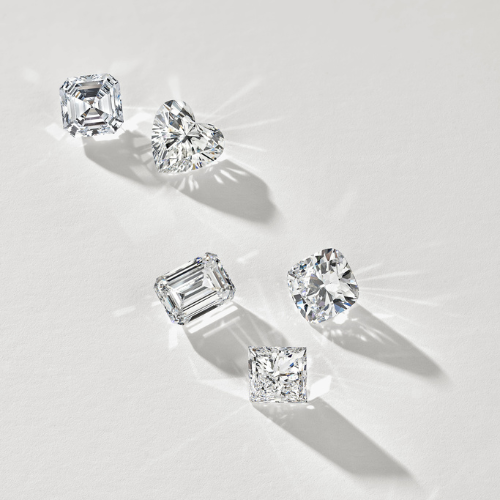When it comes to buying gemstones, especially diamonds, one of the most important decisions you’ll make is understanding the grading system. Two of the most well-known organizations that grade diamonds and gemstones are IGI (International Gemological Institute) and GIA (Gemological Institute of America). These organizations are widely recognized in the jewelry industry, but they each have distinct approaches to gemstone grading. In this article, we will dive into the key differences between IGI and GIA, examining their grading methods, credibility, and the impact of their reports on your gemstone purchase.
Table of Contents
Understanding IGI and GIA
IGI vs GIA is a comparison often made by consumers and jewelers when choosing between two grading reports for a gemstone, particularly diamonds. The International Gemological Institute (IGI) was established in 1975 and has since become one of the leading gemological laboratories worldwide. It offers gemological certification for diamonds, colored stones, and jewelry. IGI is based in Antwerp but has branches all over the world.
On the other hand, the Gemological Institute of America (GIA) is the most renowned gemological institute, founded in 1931 in the United States. GIA is often considered the gold standard in diamond grading and is known for its thorough and precise grading system. GIA reports are trusted by consumers and professionals alike due to the institute’s long history and consistent adherence to high standards.
Grading Systems: IGI vs GIA
The primary purpose of both IGI and GIA is to assess the quality of diamonds and other gemstones through a grading system. Both institutes use the 4Cs – Cut, Color, Clarity, and Carat Weight – as the foundation of their grading. However, the methods and grading standards may vary slightly between IGI and GIA.
IGI uses a comprehensive grading system, which includes not only the 4Cs but also additional details about the gemstone’s proportions, symmetry, and fluorescence. This makes IGI reports very detailed, offering customers a broad view of a gemstone’s quality. However, some critics argue that IGI tends to grade diamonds slightly more generously than GIA.
GIA, on the other hand, follows a highly standardized grading system that is internationally recognized and respected. It is known for its consistency and rigorous adherence to grading rules. GIA’s reports are often viewed as more conservative compared to IGI’s, especially when it comes to grading diamonds. GIA has strict criteria for cut quality, and its approach to grading clarity and color tends to be more precise.
Trustworthiness and Credibility: IGI vs GIA
Trust is a crucial factor when comparing IGI vs GIA. Consumers rely on the credibility of these organizations to ensure they are getting a gemstone of the promised quality. GIA has established itself as the gold standard in diamond grading. Many high-end jewelers and buyers consider GIA reports to be the most trustworthy and reliable, which is why diamonds with GIA certification often command a higher price in the market.
In contrast, while IGI is also a reputable institution with global recognition, it doesn’t enjoy the same level of prestige as GIA. Some critics claim that IGI is more lenient in its grading standards, which could affect the gemstone’s perceived value. However, IGI’s detailed reports are still highly regarded, especially in certain markets and for colored gemstones, where IGI has earned a strong reputation.
Cost Differences: IGI vs GIA
When it comes to cost, there is often a noticeable difference between IGI and GIA-certified gemstones. Generally, lab created diamonds and other gemstones with GIA certification tend to be more expensive than those with IGI certification. This price difference stems from the perceived value of the GIA grading report. GIA’s reputation for precision and objectivity can command a premium, which results in higher prices for GIA-certified gemstones.
IGI-certified stones, while still valuable, tend to be more affordable. This makes them a popular choice for consumers looking for good-quality gemstones at a lower price point. However, it’s essential to remember that the cost of a diamond or gemstone is influenced by various factors, including the quality of the stone itself, not just the grading report.
Consumer Experience: IGI vs GIA
When choosing between IGI vs GIA, consumers should consider how each grading system aligns with their needs. If you prioritize detailed information and affordability, an IGI-certified gemstone might be the right choice for you. IGI reports provide a thorough analysis, and for many buyers, the slight variations in grading are acceptable as long as they get a good deal.
On the other hand, if you are looking for the highest level of trust and are willing to pay a bit more for the assurance that comes with a GIA certificate, then GIA is likely the better choice. GIA’s reports are recognized globally, and the institute’s consistent grading standards make it a favorite among serious collectors and investors.
Conclusion: IGI vs GIA – Which is Better?
Ultimately, the choice between IGI and GIA depends on your personal preferences and priorities. Both organizations are respected, and their grading reports provide valuable insights into the quality of gemstones. IGI is known for its detailed reports and affordability, while GIA is the industry leader known for its rigorous standards and trustworthiness.
For those looking for the most reliable and respected certification, GIA is often considered the best option. However, if you are focused on value and don’t mind a slightly more lenient grading system, an IGI-certified gemstone may be just as suitable. Understanding the differences between IGI vs GIA can help you make an informed decision and ensure that you get the gemstone that best fits your needs and budget.

